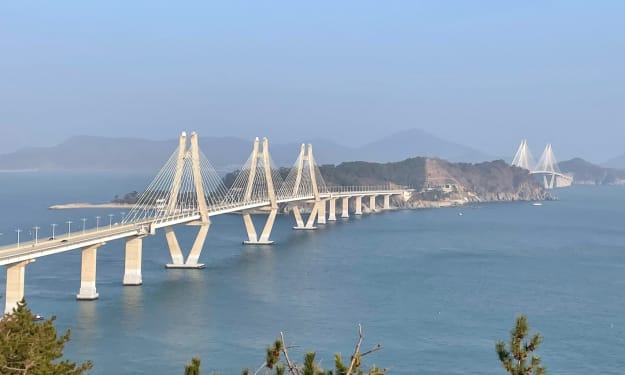Budding U.S. offshore wind industry facing rough seas
Offshore Wind US

Just as the United States is entering the deep end of offshore wind energy development, the nascent domestic industry is facing major supply chain issues, surging costs, permitting delays, and other headwinds that could jeopardise the aggressive installation timelines set by state and federal governments.
These challenges, primarily caused by the pandemic, inflation, and Russia's invasion of Ukraine, should prompt states to work more closely together on workforce development, transmission planning, building a domestic supply chain, and other areas where they can collaborate to help keep costs down, according to several panellists at an industry conference in Boston this week.
"It's challenging," said Tristan Grimbert, president and CEO of EDF Renewables, a joint venture with Shell New Energies to develop an offshore wind lease area off the coast of New Jersey. "A lot of things have to go right." It does incur some costs because a supply chain must be built from the ground up. The United States is undertaking a significant undertaking. There was no offshore five years ago. Now you're talking about dozens of ongoing projects."
There are currently only two offshore wind projects in operation in the United States: a two-turbine test array off the coast of Virginia operated by Dominion Energy, which is expected to grow into a much larger 2.6 gigawatts project, and the Block Island Wind Farm off the coast of Rhode Island, but there are many more in various stages of construction and development, mostly along the Atlantic Coast. However, the Bureau of Ocean Energy Management, which regulates energy development in federal waters, recently held a lease sale off the coast of California and is working to open up the Gulf of Mexico as well. Other potential lease areas off the coast of Oregon have been identified.
The Biden administration has set a target of 30 gigawatts of offshore wind capacity by 2030. Many coastal states, from California to Louisiana to Maine, have aggressive goals of their own. Maryland, for example, recently increased its target to 8.5 gigawatts. If the construction goes as planned, coastal states will be producing massive amounts of electricity offshore that will meet a large portion of their electric demand, potentially improving grid reliability and requiring fewer new power plants elsewhere.
At the same time, prices are rising. According to an April report by Energy Monitor, a subsidiary of GlobalData, the cost of a wind turbine has risen by 38% in the last two years. And those increases are having an effect.
SouthCoast Wind, a joint venture between Shell and the Spanish company Ocean Wind, is attempting to terminate and renegotiate contracts with local utilities to take the electricity generated by the project. SouthCoast reported a 20% increase in costs. Avangrid Renewables, another Massachusetts wind farm developer, terminated its existing contracts with state utility companies in 2022 due to similar cost concerns.
While many states pursuing offshore wind see the potential not only for clean energy but also for the thousands of jobs, manufacturing facilities, and other economic development benefits that a surge in wind development can bring, industry representatives urged state leaders to take a more regional approach.
"You cannot have each component produced in each state," Sy Oytan, chief operating officer for Avangrid, which owns half of the 800-megawatt Vineyard Wind 1 project off the coast of Massachusetts, said.
These are not new concerns. According to two reports released earlier this year, meeting federal and state offshore wind goals will necessitate billions of dollars in transmission infrastructure spending, "unprecedented" cooperation between grid operators and federal and state agencies, and a significant expansion of a domestic supply chain.
"I think there's going to be an adjustment with some of these timelines with these projects," said Chris Kearns, acting commissioner of the Rhode Island Office of Energy Resources. According to Kearns, Rhode Island currently has the most aggressive renewable energy goal in the country, aiming for 100 percent renewable energy by 2033. It also has the nation's first offshore wind project, the 30-megawatt Block Island Wind Farm, and construction on the proposed 700-megawatt, 65-turbine Revolution Wind project off the state's coast is underway.
"We are still reliant on a number of these products coming from overseas," said Kearns. "But that's just the nature of the energy industry, whether it's offshore wind, solar, or charging infrastructure for electric vehicles." It's simply a very hot market in terms of the overall clean energy market, with all of the states pursuing it and countries pursuing it and being very aggressive, so there's a lot of demand right now. And that will result in delays."
Speaking at the conference, federal officials stated that they are working to streamline permitting, encourage upgrades, and foster state collaboration.
According to Jessica Stromberg, chief of the Bureau of Ocean Energy Management's environment branch for renewable energy, the agency is constantly "balancing the need to move forward to address the climate crisis against the equally important need to ensure that the actions taken are avoiding, minimising, and mitigating impacts to the greatest extent possible."
She also stated that the BOEM has proposed new "modernised" regulations for the development of clean energy.
According to Jeffrey Dennis, deputy director for transmission at the US Department of Energy's Grid Deployment Office, planning a transmission system to connect all of the wind energy that states are commissioning, not just to the shore, but to different regions, could result in significant benefits for electric ratepayers in the long run.
"As we look towards that vision of a more interconnected, meshed offshore wind network, we're going to need a lot of ongoing collaboration from the states," he said. "As a result, one of our primary and immediate recommendations is that offshore wind states form a more formal collaborative.""If we're going to build this cost-effective meshed network that I'm talking about," individual states' goals "are going to need to start informing each other."
Indeed, just last month, Massachusetts asked the Department of Energy on behalf of all New England states, as well as New York and New Jersey, to form a Northeast States Collaborative on Interregional Transmission, which the Massachusetts governor's office described as "a new approach to planning for electric transmission infrastructure across multiple regions" that could lower consumer prices, increase reliability, and increase access to clean energy.
Other collaborative frameworks exist, such as Virginia, Maryland, and North Carolina's memorandum of understanding to make the Southeast and mid-Atlantic an offshore wind hub, and the Federal-State Offshore Wind Implementation Partnership, a collaboration between federal agencies and governors from 11 East Coast states.
"In terms of economic development, I've always said there's a pie and everyone's going to get their fair share of it," said Kearns, the Rhode Island energy official, noting that the Revolution Wind project will be shared by Rhode Island and Connecticut. "This is a multi-state effort, and these projects will have a spillover effect in terms of economic development."
About the Creator
Erik Roelans
I am founder and CEO of ER-MARINE and write about the green energy transition, renewable energy challenges, climate change, offshore wind permitting, policy dialogue, marine biodiversity, renewables and floating offshore wind development.






Comments
There are no comments for this story
Be the first to respond and start the conversation.